Foreign News
Thomas Matthew Crooks: What we know about the Trump attacker

The small Pittsburgh suburb of Bethel Park in Pennsylvania is reeling after the FBI named a young local man, Thomas Matthew Crooks, as the person who shot at Donald Trump during a campaign rally and shocked the nation.
Investigators believe that Crooks, armed with an AR-style rifle, opened fire at the former president while he was addressing a crowd in Butler, Pennsylvania, leaving one audience member dead and two others critically wounded.
The 20-year-old kitchen worker was shot dead at the scene by a Secret Service sniper, officials said.
In his quiet and well-to-do hometown, however, neighbours are in shock, seemingly unable to grasp how a quiet young man is now accused in the shooting.
The FBI, for its part, has said only that Crooks was the “subject involved in the assassination attempt on the former president and that an active investigation was under way.
Thomas Crooks had not been carrying ID, so investigators used DNA to identify him, the FBI said.
He was from Bethel Park in Pennsylvania, about 70km (43 miles) from the site of the attempted assassination, and graduated in 2022 from Bethel Park High School with a $500 prize for maths and science, according to a local newspaper.
Crooks worked in a local nursing home kitchen just a short drive away from his home, the BBC understands.
State voter records show that he was a registered Republican, according to US media.
He is also reported to have donated $15 to liberal campaign group ActBlue in 2021.
According to US media reports, Crooks was wearing a T-shirt from Demolition Ranch, a YouTube channel known for its guns and demolition content. The channel has millions of subscribers featuring videos on different guns and explosive devices.
Law enforcement officials believe the weapon used to shoot at Donald Trump was purchased by Crook’s father, the Associated Press news agency reports.
Speaking on condition of anonymity, two officers told AP that Crooks’ father bought a weapon at least six months ago.
The day after the shooting, law enforcement sources also told CBS, the BBC’s US partner, that suspicious devices were found in Crooks’ vehicle.
According to CBS, the suspect had a piece of commercially available equipment that appeared capable of initiating the devices.
Bomb technicians were called to the scene to secure and investigate the devices.
Having established Crooks’s identity, police and agencies are investigating his motive.
“We do not currently have an identified motive,” said Kevin Rojek, FBI Pittsburgh special agent in charge, at a briefing on Saturday night.
The inquiry into what took place could last for months and investigators would work “tirelessly” to identify what Crooks’ motive was, Mr Rojek said.
Speaking to CNN, Crooks’ father, Matthew Crooks, said he was trying to figure out “what the hell is going on” but would “wait until I talk to law enforcement” before speaking about his son.
Police sealed off the road to the house where Crooks lived with his parents, CBS News reports.
A neighbour told CBS that officers evacuated her in the middle of the night with no warning.
Bethel Park Police said there was a bomb investigation surrounding Crooks’s home.
Access to the area remains tightly controlled with police vehicles blocking the roads. Only residents have been allowed in or out.
Law enforcement sources told CBS that they believe some degree of planning ahead of the shooting.
How much time was spent in that planning, however, remains the subject of an ongoing investigation.
Police believe he acted alone, but are continuing to investigate whether he was accompanied to the rally.
So far, a confusing – and at times conflicting – picture has emerged of who Crooks was as a person.
Speaking to local news outlet KDKA, some young locals who went to school with him described him as a loner, who was frequently bullied and sometimes wore “hunting outfits to school”.
Another former classmate of his, Summer Barkley, cast him differently, telling the BBC that he was “always getting good grades on tests” and was “very passionate about history”.
“Anything on government and history he seemed to know about,” he said. “But it was nothing out of the ordinary….he was always nice.”
Others simply remembered him as quiet.
“He was there but I can’t think of anyone who knew him well,” one former classmate, who asked to remain nameless, told the BBC. “He’s just not a guy I really think about. But he seemed fine.
Jameson Myers, a former member of the Bethel Park High School varsity rifle team who graduated alongside Crooks in 2022, told CBS that he did not make the team.
“He did not even make the junior varsity team after trying out,” Mr Myers added. “He never returned to try-outs for the remainder of high school.”
Mr Myers remembers Crooks as seemingly a “normal boy” who was “not particularly popular but never got picked on or anything.”
“He was a nice kid who never talked poorly of anyone and I never have thought him capable of anything I’ve seen him do in the last few days.”
A shooting club in the Pittsburgh area, the Clairton Sportmen’s Club, later confirmed that Crooks was a member, although club president Bill Sellitto did not provide any more details.
Other community members said simply that they were shocked that the alleged perpetrator of the shooting could have come from the quiet, green streets of Bethel Park.
Among them was Jason Mackey, a 27-year-old local man who lives near the Crooks residence and worked at his school while he was a student.
While Mr Mackey said that he did not know Crooks personally, he is still reeling from a sense of disbelief.
“It’s just shocking. You wouldn’t think an event of this magnitude would come right out of your backyard,” he said. “It’s just a crazy situation.”
One person was killed and two others were injured in the shooting.
All three victims are adult men and were audience members, CBS News reports.
At a news conference on Sunday, Pennsylvania Governor Josh Shapiro identified the deceased victim at Corey Comperatore, a 50-year-old volunteer fire chief who was killed when he “dived on his family” to protect them.
He said that Comperatore “died a hero”.
A GoFundMe page, organised by the Trump campaign’s national finance director Meredith O’Rourke, was set up in the hours after the attack with donations going to the families of the injured.
It has so far raised more than $340,000 (£267,000).
In a post to his Truth Social platform, Trump said he was “shot with a bullet that pierced the upper part of my right ear” and said he felt the bullet “ripping through the skin”.
Blood was visible on Trump’s ear and face as protection officers rushed him away.
Trump is “doing well” and is grateful to law enforcement officers, according to a statement published on the Republican National Committee (RNC) website.
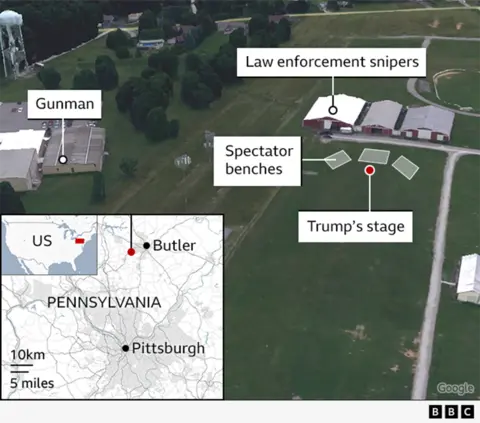
One witness told the BBC that he had seen a man – believed to be Crooks – with a rifle on the roof of a building before Trump was shot.
Video footage obtained by TMZ shows the moment the shooting began.
The assailant opened fire with “an AR-style rifle”, CBS News reports.
Law enforcement sources also told CBS that he was reported by a bystander and identified as a suspicious person by police, but that officers lost track of him before the shooting began.
However, the FBI says it did not immediately know what type of firearm was used or how many shots were fired.
A Secret Service sniper returned fire and killed the gunman, the agency said.
Footage later shows armed officers approaching a body on the roof of the building.
(BBC)
Foreign News
Around 40 dead in Swiss ski resort bar fire, police say
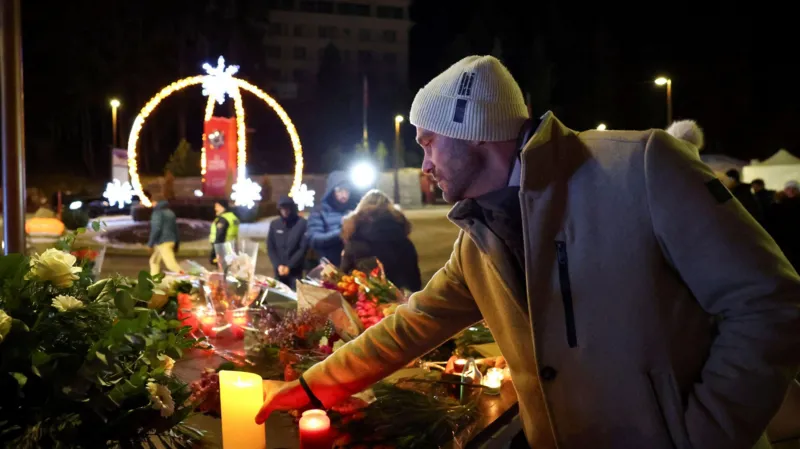
Around 40 people have died after a fire ripped through a bar in a ski resort in southern Switzerland, police have said. A further 115 people are injured, many of them “severely”.
The fire broke out at around 01:30 (00:30 GMT) during new year celebrations in a bar called Le Constellation in Crans-Montana.
Officials investigating the incident have not confirmed any cause, but categorically ruled out an attack.
People from multiple countries have been affected. Regional police commander Frédéric Gisler has said the priority in the coming days is to identify those who have died “so that their bodies can be returned rapidly” to their families.
Thirteen helicopters, 42 ambulances and 150 emergency responders were sent overnight to the scene of the fire in the Valais region, which is popular with tourists.
Most of the injured experienced severe burns and 60 people were sent to Sion hospital in Valais, with a “significant number” in a critical condition, Regional governor Mathias Reynard said.
Its intensive care unit was at full capacity and Reynard said the local community must take extra care to avoid needing hospital treatment unnecessarily.
“We are painfully aware that identifying the bodies, as well as the injured, may still take a terribly long time for the families involved,” Reynard added.
Some people have been taken to hospitals in other Swiss cities including Lausanne and Zurich which have specialist burns units.
A spokesperson for Lausanne University Hospital said they were treating 22 patients with burn injuries, while Zurich University Hospital said it was treating 12 patients for burns.
The Italian Foreign Ministry has told the BBC that 16 Italian nationals are currently missing, and between 12 and 15 others are receiving treatment in hospital.
The French foreign ministry said eight of its citizens were missing and that it could not rule out that French nationals were among the dead.
French media has reported that at least two of the injured are French nationals.
Three Italian nationals are being evacuated to Milan’s Niguarda hospital where there is a major burns unit, Italian councillor Guido Bertolaso has said.
They have burns across “30-40% of their bodies”, he told reporters, and they remain intubated, but “the fact they could be moved is a good sign”.
The precise number of dead and injured is not yet known, nor their nationalities but officials have confirmed that several nationalities were involved.
Speaking at a press conference on Thursday evening, officials said they did not know how many people were in the bar when the fire broke out.
State councillor Stéphane Ganzer described the bar as having a “young festive population” during the New Year’s Eve party.
Attorney General Beatrice Pilloud has said an investigation was under way “to identify the circumstances which caused this dramatic situation to occur”.
She was asked by journalists at the press conference about rumours that bottles of champagne carrying flares might have been the cause of the blaze, and whether the staircases were “very narrow”.
She replied that she could not confirm anything while the investigation is ongoing.
Ms Pilloud said the staircases did appear to be narrow, but investigations would assess whether they were in line with requirements.
She said “several hypotheses” for the cause of the blaze have been put forward, and the favoured theory was a “general fire which caused conflagration” – a large fire that causes a lot of damage, rather than an explosion.
Several witnesses have been interviewed, she said, and phones have also been recovered for analysis.
“At no time is there question of any attack”, she said.
Work is ongoing to identify the victims and return bodies to families as quickly as possible, Ms Pilloud said, adding: “To do that there is significant work which needs to be carried out. And this significant work will require the closure of the district.”
The Italian ambassador to Switzerland, Gian Lorenzo Cornado, said that it would take weeks to identify the dead.
A helpline has been set up for families: +41 848 112 117
The fire was “one of the worst tragedies that our country has experienced,” Swiss President Guy Parmelin told reporters.
Local people gathered to pay tribute to the dead and injured at a vigil at Montana Station Church on Thursday evening, and floral tributes were laid near the scene of the fire.
Crans-Montana is a luxury ski resort, famous in the 1980s for hosting the World Cup skiing.
Le Constellation, which has been around for decades, has an upstairs with TV screens where people go and watch football matches, and a large bar downstairs for drinking and dancing.
The UK Foreign Office said its “thoughts are with all those injured and killed in the terrible tragedy” and consular staff were on standby to provide support to any British nationals affected.
King Charles said he and his wife Queen Camilla were “greatly saddened” to learn of the fire, and that it was “utterly heartbreaking that a night of celebration for young people and families instead turned to such nightmarish tragedy”.
French President Emmanuel Macron said France was welcoming the injured from Crans-Montana to its hospitals.
European Commission President Ursula von der Leyen said the EU was working with Swiss authorities to get medical help to victims through the EU’s civil protection mechanism.
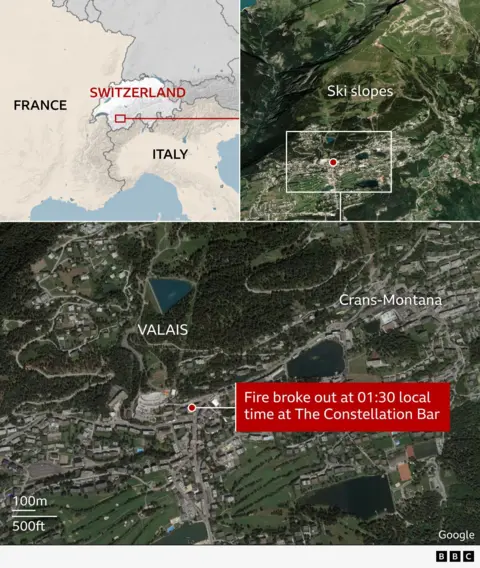
Foreign News
Israel to bar 37 aid groups from Gaza

Israel is to revoke the licenses of 37 aid groups working in Gaza and the occupied West Bank, saying they failed to meet requirements under new registration rules.
Well-known international non-governmental organisations (INGOs) such as ActionAid, the International Rescue Committee and the Norwegian Refugee Council are among those that will have their licenses suspended on 1 January, with their operations to end within 60 days.
Israel said the groups, among other things, had failed to hand over “complete” personal details of their staff.
The move was heavily criticised by foreign ministers from 10 countries including the UK, who said the new rules were “restrictive” and “unacceptable”.
In a joint statement, the foreign ministers of the UK, France, Canada, Denmark, Finland, Iceland, Japan, Norway, Sweden and Switzerland said the forced closure of INGO operations would “have a severe impact on access to essential services including healthcare”.
They added that the humanitarian situation in Gaza remained “catastrophic” and called on Israel’s government to ensure INGOs were able to operate “in a sustained and predictable way”.
Israel’s Ministry of Diaspora Affairs, which is in charge of registration applications, said the new measures would not impact the flow of humanitarian assistance to Gaza.
It added that aid continued to be delivered through “approved and vetted channels”, including UN agencies, bilateral partners, and humanitarian organisations.
It said the primary reason aid groups were having their licences revoked was “the refusal to provide complete and verifiable information regarding their employees,” which it said was critical to preventing “the infiltration of terrorist operatives into humanitarian structures”.
Earlier this month, UN-backed experts said there had been improvements in nutrition and food supplies in Gaza since a ceasefire was brokered between Israel and Hamas in October, but 100,000 people still experienced “catastrophic conditions” the following month.
Israeli military body Cogat, which controls Gaza’s crossings, said the organisations that will be suspended “did not bring aid into Gaza throughout the current ceasefire”.
It added that “even in the past their combined contribution amounted to only about 1% of the total aid volume”.
The Ministry of Diaspora Affairs said that fewer than 15% of organisations providing humanitarian assistance to Gaza were found to be in violation of the new regulatory framework.
That framework includes several grounds for rejection, including:
- Denying the existence of Israel as a Jewish and democratic state
- Denying the Holocaust or the Hamas-led attacks on Israel on 7 October 2023
- Supporting an armed struggle against Israel by an enemy state or terrorist organisation
- Promoting “delegitimisation campaigns” against Israel
- Calling for a boycott of Israel or committing to participate in one
- Supporting the prosecution of Israeli security forces in foreign or international courts
The Humanitarian Country Team of the Occupied Palestinian Territory – a forum that brings together UN agencies and more than 200 local and international organisations – previously warned that the new registration system “fundamentally jeopardises” the operations of INGOs in Gaza and the West Bank.
“The system relies on vague, arbitrary, and highly politicised criteria and imposes requirements that humanitarian organisations cannot meet without violating international legal obligations or compromising core humanitarian principles,” it said.
It added: “While some INGOs have been registered under the new system, these INGOs represent only a fraction of the response in Gaza and are nowhere near the number required just to meet immediate and basic needs.”
According to the Humanitarian Country Team, INGOs currently run or support most of Gaza’s field hospitals and primary healthcare centres, emergency shelter responses, water and sanitation services, nutrition stabilisation centres for children with acute malnutrition, and critical mine action activities.
In a statement, Israel’s Minister of Diaspora Affairs and Combating Antisemitism, Amichai Chikli, said: “The message is clear: humanitarian assistance is welcome — the exploitation of humanitarian frameworks for terrorism is not.”
Other organisations to be suspended include CARE, Medico International and Medical Aid for Palestinians.
[BBC]
Foreign News
Protests spread across Iran for third day after currency hits record low
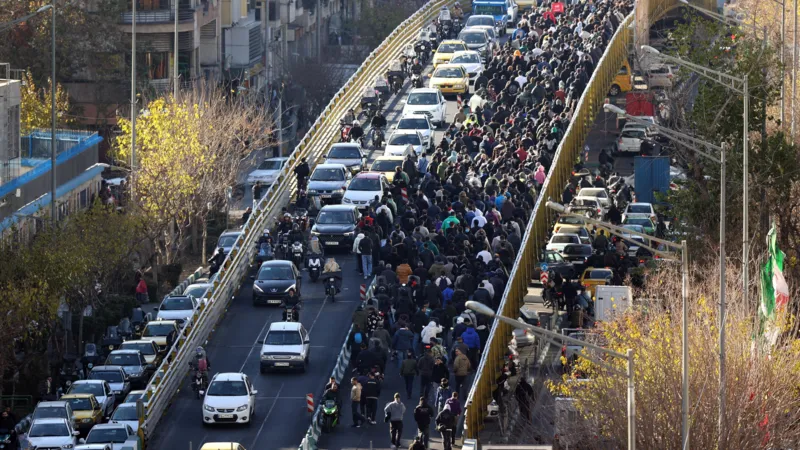
Protests and strikes in Iran over inflation and currency devaluation have spread from the capital, Tehran, to several other cities on a third day of unrest.
The protests began on Sunday after shopkeepers in Tehran’s Grand Bazaar staged a strike when the Iranian rial hit a record low against the US dollar on the open market.
Since then, videos verified by BBC Persian have shown demonstrations in the cities of Karaj, Hamedan, Qeshm, Malard, Isfahan, Kermanshah, Shiraz and Yazd. Police were also seen using tear gas in an attempt to disperse demonstrators.
The Iranian government said it “recognises the protests” and would listen “with patience, even if it is confronted with harsh voices”.
President Masoud Pezeshkian wrote on X late on Monday that he had instructed the interior minister to hold talks with what he described as “representatives” of the protesters so that measures could be taken “to resolve the problems and act responsibly”.
He also accepted the resignation of Iran’s central bank governor, Mohammadreza Farzin, and named former economy and finance minister Abdolnasser Hemmati to replace him.
University students have also joined the protests, chanting anti-government slogans including “Death to the dictator” – a reference to the Supreme Leader, Ayatollah Ali Khamenei, who holds ultimate power in Iran.
Some protesters were also heard chanting slogans in support of the son of the late Shah Mohammad Reza Pahlavi, who was overthrown in the 1979 Islamic Revolution, including “Long live the Shah”.
In response, Reza Pahlavi, who lives in exile in the United States, wrote on X: “I am with you. Victory is ours because our cause is just and because we are united.”
“As long as this regime remains in power, the country’s economic situation will continue to deteriorate,” he added.
The US state department’s Persian-language account on X also expressed support for the protests.
It said the US “praises their courage” and stands with those seeking “dignity and a better future” after years of failed policies and economic mismanagement.
Iran was reportedly high on the agenda of a meeting between US President Donald Trump and Israeli Prime Minister Benjamin Netanyahu in Florida on Monday,
At a joint news conference afterwards, Trump declined to say whether he supported regime change in Iran, but said: “They’ve got a lot of problems: tremendous inflation, their economy is bust, their economy is no good, and I know people aren’t so happy.”
The president also said he might back another round of Israeli air strikes on Iran if the country rebuilt its ballistic missile or nuclear programmes.
During a 12-day war between Israel and Iran in June, the US carried out air strikes on key Iranian uranium enrichment sites. Iran insists its nuclear programme is entirely peaceful.
President Pezeshkian vowed on Tuesday that Iran’s response to “any oppressive act of aggression” would be “severe and regret-inducing”.
Iran’s supreme leader has repeatedly said that Israel’s government hoped mass protests would erupt in Iran during the war and topple the regime.
“They wanted to create sedition on the streets… But people were absolutely not influenced by what the enemy wanted,” Khamenei said in September.
[BBC]
-

 Sports4 days ago
Sports4 days agoGurusinha’s Boxing Day hundred celebrated in Melbourne
-
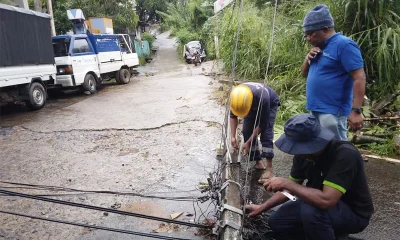
 News2 days ago
News2 days agoLeading the Nation’s Connectivity Recovery Amid Unprecedented Challenges
-

 Sports5 days ago
Sports5 days agoTime to close the Dickwella chapter
-

 Features3 days ago
Features3 days agoIt’s all over for Maxi Rozairo
-

 News5 days ago
News5 days agoEnvironmentalists warn Sri Lanka’s ecological safeguards are failing
-

 News3 days ago
News3 days agoDr. Bellana: “I was removed as NHSL Deputy Director for exposing Rs. 900 mn fraud”
-

 News2 days ago
News2 days agoDons on warpath over alleged undue interference in university governance
-

 Features5 days ago
Features5 days agoDigambaram draws a broad brush canvas of SL’s existing political situation













